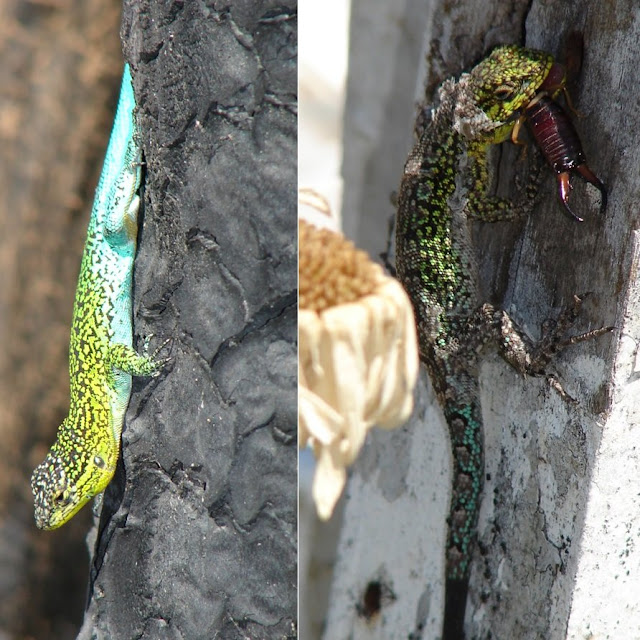New research shows that males and females of the same species can evolve to be so different that they prevent other species from evolving or colonising habitats, challenging long-held theories on the way natural selection drives the evolution of biodiversity.
 |
| Image showing variations between male and female Liolaemus nigriceps [Credit: Dr Daniel Pincheira-Donoso, School of Life Sciences, University of Lincoln] |
New research from the UK has shown that exactly the same mechanism of evolution that creates new species also operates within the same species when males and females compete for the ecological resources available in different habitats, such as bushy areas or stony patches with abundant food. The conflict between the sexes can lead to one sex becoming bigger, more colourful or adapting to eat different food, just like a traditional process of evolution by natural selection can lead an ancestor to split into two different species.
This process of evolution between the sexes expands the biodiversity of the area - a development that evolutionary biologists previously thought only occurred when the number of different species using different resources or 'niches' increases. This new research challenges that assumption, showing that different species and different sexes of the same species can occupy these niches.
 |
| Image showing variations between male and female Liolaemus tenuis [Credit: Dr Daniel Pincheira-Donoso, School of Life Sciences, University of Lincoln] |
Conducted by academics from the Universities of Lincoln, Exeter and Sheffield, the study demonstrated that biodiversity can now be seen as the formation of new, different species, or, as the formation of different sexes which are distinct enough to be equivalent to different species in the way they 'saturate' ecological niches.
Dr Daniel Pincheira-Donoso, Senior Lecturer in Evolutionary Biology at the School of Life Sciences at the University of Lincoln and lead researcher on the study, said: "Our research reveals evidence for this intriguing phenomenon that the evolution of sexes within a species could replace the evolution of new species, which begins to add a new layer to our understanding of the evolution of biodiversity.
"It is important to stress that the diversity of life on our planet applies not only to the evolution of different species, but also to the independent evolution of males and females within the same species, which potentially has very important implications."
The findings have been published in the scientific journal Global Ecology and Biogeography.
Source: University of Lincoln [February 21, 2018]
